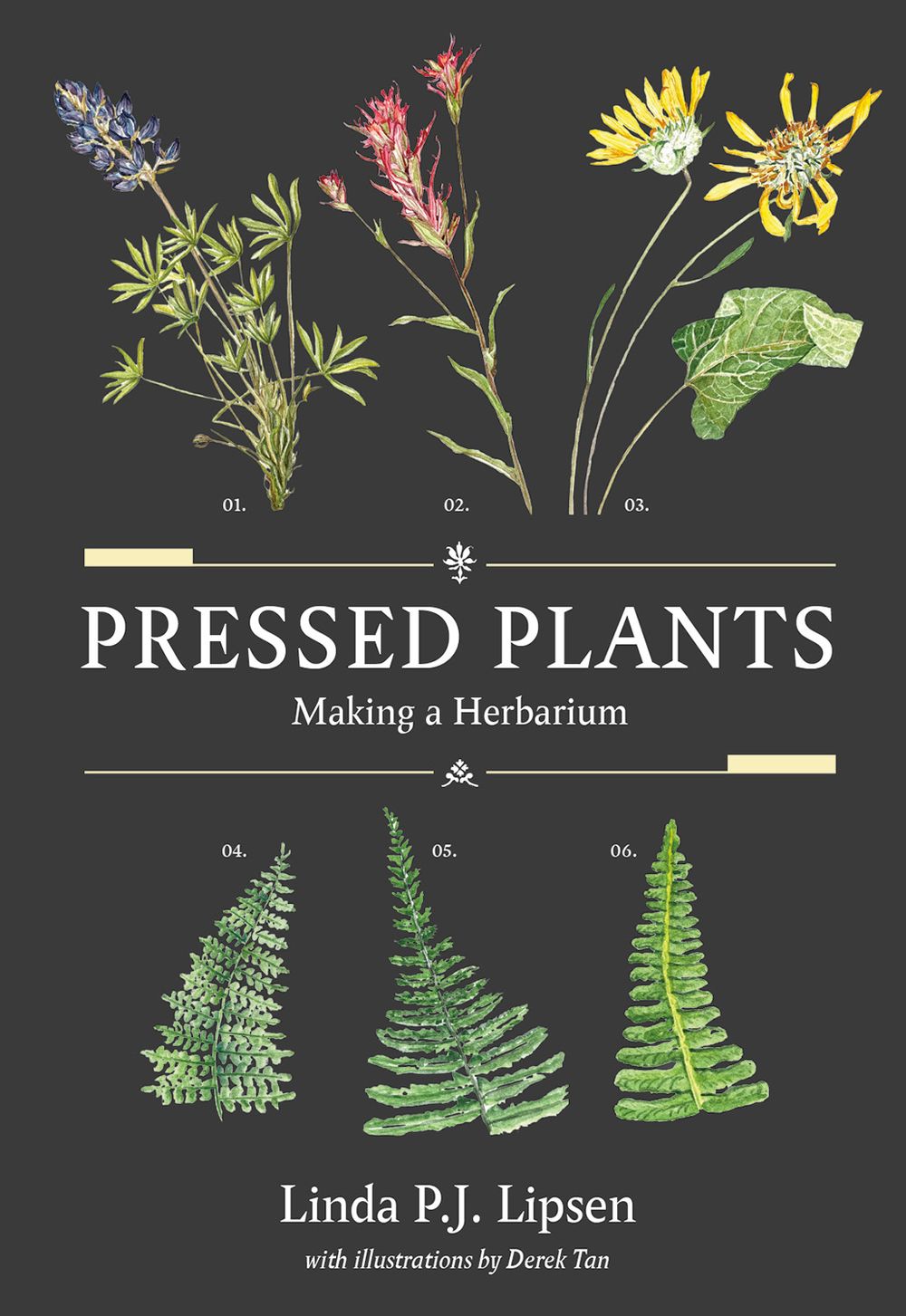

Today, it is more important than ever that we document the Earth’s plant biodiversity during this critical period of climate change and rapid biodiversity loss. Pressed Plants will teach you how to press and preserve plants for fun, sustainable crafts, education, and to help support scientists to carry out plant biodiversity research and conservation work.
After 16 years of pressing plants for teaching and research, and running one of the largest herbariums in Canada, Linda PJ (Jennings) Lipsen has written Pressed Plants, Making a Herbarium, illustrated by Derek Tan and published by the Royal British Columbia Museum. Pressed Plants responds to the recent revival of enthusiasm for nature, biodiversity, and conservation. Written for amateurs and hobbyists, instructors and researchers, Pressed Plants will teach you how to properly press plants to help document plant biodiversity so it is better understood, valued, and protected.
I have been pressing plants for crafts and science for the past 30 years and it gives me great pleasure and satisfaction to make a good plant pressing. I have also cared for herbarium collections for nearly 20 years and have experienced first-hand the power a specimen can have on our understanding of the world's plant biodiversity. I want to share this experience with others, and after teaching many plant pressing workshops and plant collection activities, I find nothing more gratifying than turning someone on to collecting and pressing plants. I really want to make Pressed Plants accessible to anyone as a hobby, yet also add enough detail so you too can make or teach this long tradition of documenting our Earth’s plant diversity. You will learn how to prepare before you head out to collect, including responsible and ethical collecting and cultural considerations, -Respect Where You Collect! You will read about collecting plants for science and what kinds of plants to collect. You will learn the natural history techniques for pressing and drying a plant, mounting a specimen, and how to organize and protect your plant collection for centuries. This book will start you on your way to learning these important techniques for documenting our world's plant diversity and distributions by pressing plants.
— Linda P.J. Lipsen